Occupational therapist and professor at the University of Burgos, Olalla Saiz, presents, together with several of her students, an stroke intervention from occupational therapy with NeuronUP.
What is stroke
Stroke or cerebral infarction is caused by a lack of blood supply in the brain’s blood vessels. In addition, cerebrovascular accident is the third leading cause of death in Spain among men and women.
The prevalence is among people over 65 years of age, although cases among people under 45 have increased recently (1).
Types of stroke
According to the etiology of cerebral infarction the following can be distinguished (1):
- Ischemic stroke: This occurs when a blood vessel is blocked due to a clot.
- Hemorrhagic stroke: It occurs due to a ruptured blood vessel.
Consequences of stroke
The consequences of cerebral infarction are the following (2):
● Loss of strength,
● decreased sensation,
● attention problems (hemineglect),
● deficits in comprehension and speech,
● increase in the body instability and decreased balance,
● sometimes may present visual field deficits.
In this case, after suffering a stroke on the right side of the body the user presents several motor and cognitive impairments. Focusing on the cognitive level, the function to be intervened is hemineglect. Hemineglect is the difficulty in attending to stimuli on the side contralateral to a brain lesion.
Furthermore, due to this lesion, the person presents dysfunction in the affected half of the body affecting omission of the contralateral visual field, smell, touch, pain, hearing and imagery. The impairment will depend on the type of hemineglect the person presents.
As mentioned, there are several types of hemineglect, but in this case the group to be treated is classified as attentional or sensory hemineglect, which is the difficulty in responding to unexpected stimuli on the affected side.
Stroke intervention from occupational therapy
Objectives
To be able to intervene therapeutically, the interests or needs of the group must be taken into account by setting a common goal between therapist and patient. Therefore, below the general objective and the specific objectives proposed for the future intervention are presented
General objective
The general objective of this stroke intervention from occupational therapy is to improve attentional/sensory neglect.
Specific objectives
- Improve mental representation,
- enhance the visuoperceptual capacity,
- improve orientation.
Methodology
- The session will last between 45-50 minutes,
- in each session work will be done with only 1 participant,
- the session will be conducted in a room away from numerous external stimuli to avoid the user’s distraction,
- depending on time distribution 3- 4 activities per session are planned.

Subscribe
to our
Newsletter
Activities to carry out a stroke intervention from occupational therapy
To meet the objectives, these skills must be worked on to stimulate them and achieve a positive intervention and thus reach the desired goal. Therefore, a series of activities related to mental representation, visuoperceptual capacity and orientation will be presented, which are carried out through NeuronUP.
Below, we explain in detail the activities chosen to carry out this intervention proposal for children with ADHD:
1. Angles
What does it involve?
Users must form the indicated angle according to the given reference line. To do this, the user must pay attention to the position of the model’s lines and form the angle in the central image by clicking on the line they believe that, together with the one in green, represents the same figure.
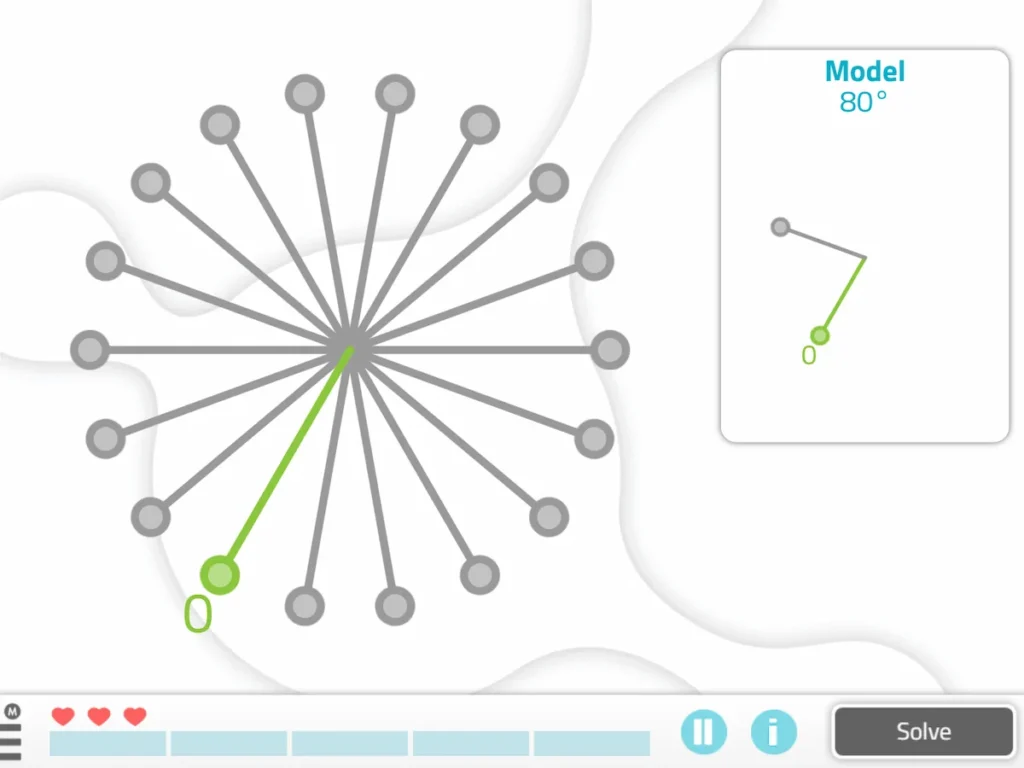
What does this activity train?
The cognitive functions it trains are:
- the spatial relationship
- the hemineglect.
Level-based play
The game is divided into 9 phases. Phase 1 being the easiest and phase 9 the most difficult. The activity will be adapted to the person according to the degree of impairment.
2. Bottle caps with letters
What does it involve?
This alphabet game for adults from NeuronUP consists of ordering the sequence of moving letters. In this video we explain how to play:
What does this activity train?
It works on the alphabet with adults in a playful way. In addition, it trains the following cognitive functions:
- Working memory,
- inhibition,
- hemineglect,
- sustained attention.
Level-based play
The game is divided into 9 phases. Phase 1 being the easiest and phase 9 the most difficult. The user will automatically move up or down levels depending on their correct or incorrect answers. To move up a phase the user must pass 5 exercises and to drop a phase they must perform 3 exercises incorrectly.
Activity customization
Furthermore, customized phases can be created and limited:
Parameters
- The number of letters.
- The letter range. For example, from A to M.
- The order. From A to Z or from Z to A.
- The letter format: uppercase or lowercase.
- Whether letters move or not.
- The maximum errors.
General aspects
You can also configure general characteristics such as the operation (correction mode or free mode and maximum allowed errors), the maximum time, whether or not you want a visible timer for the activity and an inactivity warning. In addition, the instructions can be modified.
Level-based play
The game is divided into 9 phases. Phase 1 being the easiest and phase 9 the most difficult. The user will automatically move up or down levels depending on their correct or incorrect answers.
3. Hidden Letters
What does it involve?
The user must search among a set of letters only for the indicated letter, in this case the ‘Q’.
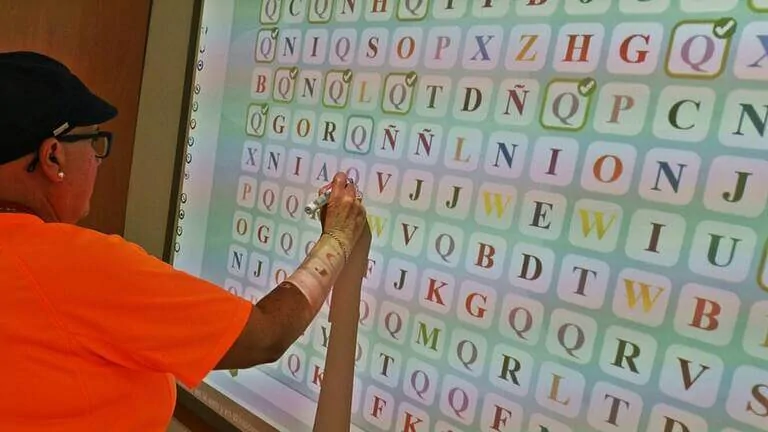
What does this activity train?
This activity trains:
- Selective attention,
- hemineglect.
Activity customization
Additionally, you will be able to customize the activity to adapt it to each user’s abilities.
Parameters
You can select:
- the size of the matrix,
- the type of letters: vowels, consonants, all or similar,
- letters uppercase or lowercase,
- the number of letters:
- whether you want different colors or not.
General aspects
You will be able to adjust the type of operation, the maximum time, whether or not you want a visible timer for the activity and an inactivity warning, modify the instructions for performing it, etc.
Bibliography
(1). Benavides Bautista PA, Sánchez Villacis L, Álvarez Mena P, Manzano Pérez VA, Zambrano Jordán D. Diagnosis, imaging and cerebrovascular accident. Enferm Inv (Ambato). 2018; 3 (sup. 1): 77-83.
(2). Díaz Cabezas, R. (2015). Knowledge of symptoms and risk factors of cerebrovascular disease in cohabitants of people at risk. Acta Neurológica Colombiana. 2015;
31(1): 12-19.
In addition to Olalla Saiz, Elena Maeztu Martínez and Claudia Manchado Lagrené contributed to this article.
If you liked this stroke intervention proposal from occupational therapy, we recommend that you take a look at these publications:
“This article has been translated. Link to the original article in Spanish:”
Intervención del ictus desde la terapia ocupacional
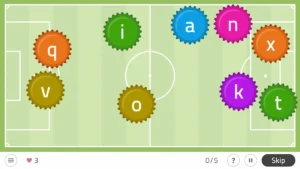
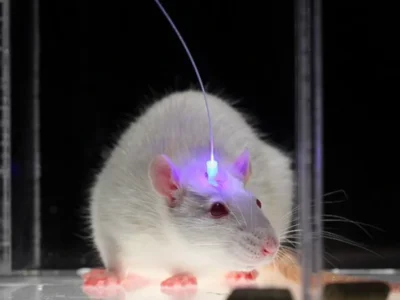
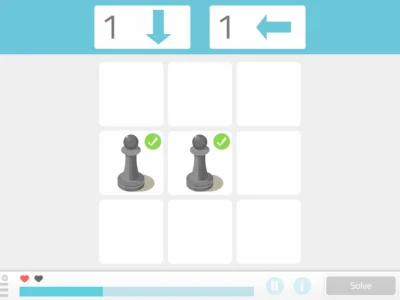


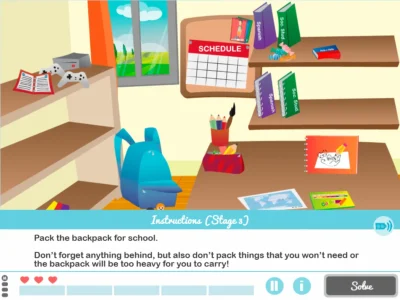

 Cognitive rehabilitation in mental health: activities for people with mental illness
Cognitive rehabilitation in mental health: activities for people with mental illness
Leave a Reply